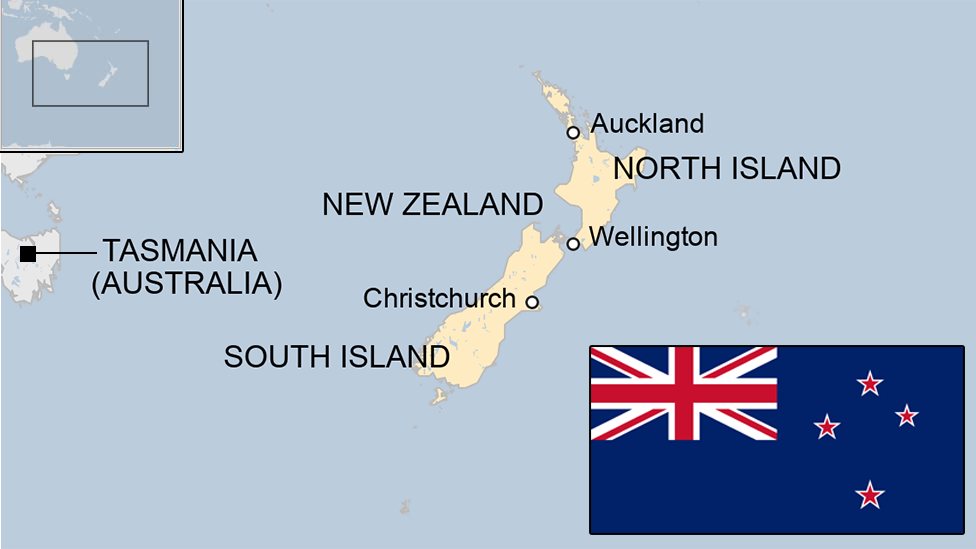Tokelau profile
- Published
This page is no longer being updated. It was last updated on 30 October 2023

Three far-flung coral atolls - Atafu, Nukunonu and Fakaofo - make up Tokelau, a dependent territory of New Zealand in the southern Pacific Ocean.
Lying between New Zealand and Hawaii, Tokelau has few physical links with the wider world. There is no airport and it takes more than a day at sea to reach its southern neighbour, Samoa.
Most of the 1,500 islanders live by subsistence farming. Thousands have chosen to leave, usually for New Zealand or Samoa. The latter has a similar culture and language.
Earmarked by the UN as a territory where it wants to encourage greater independence, Tokelauans have twice voted to retain their colonial status.
Tokelau's main industry is fishing but it also generates income from the use of its internet domain name as one of the countries offering free registration.
New Zealand is the territory's main budget provider and has sought to allay fears that it will abandon the atolls should Tokelau favour autonomy.
Like other low-lying Pacific territories, Tokelau is said to be at risk from rising sea levels. It is also vulnerable to tropical cyclones.
Read more country profiles, external. Profiles by BBC Monitoring, external
TOKELAU: FACTS
Capital: None - Atafu is the largest city
Area: 10 sq km
Population: 1,500
Languages: Tokelauan, English
Life expectancy: 68 years (men) 70 years (women)
LEADERS
Head of state: King Charles III
Head of government
Political leadership revolves around three Faipule, or village heads, who take it in turns to oversee a cabinet - the Council for Ongoing Government - for a year.
The General Fono, an assembly of elected delegates, handles local legislative affairs. It is also responsible for the territory's budget.
Each atoll has a Taupulega, or Council of Elders.
Tokelau is a non-self-governing territory and is administered by New Zealand. The Administrator of Tokelau is appointed by the New Zealand government and is responsible for supervising the government of the territory.
MEDIA
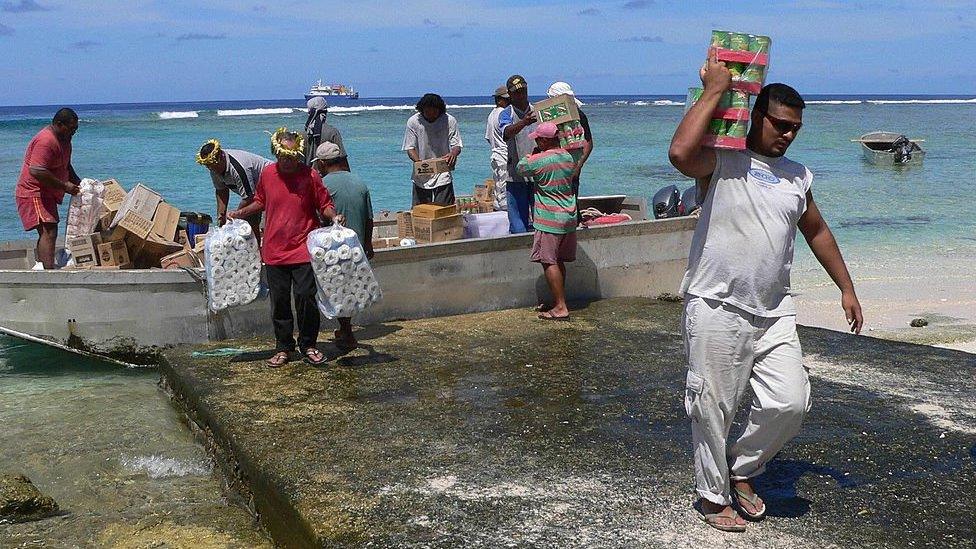
Each atoll operates an FM community radio station
Each atoll operates an FM community radio station, carrying shipping news, weather reports and music.
The stations are: Radio Atafu FM; Radio Fakaofo FM; and Radio Nukunonu FM.
The outlets are overseen by the Council for Ongoing Government.
TIMELINE
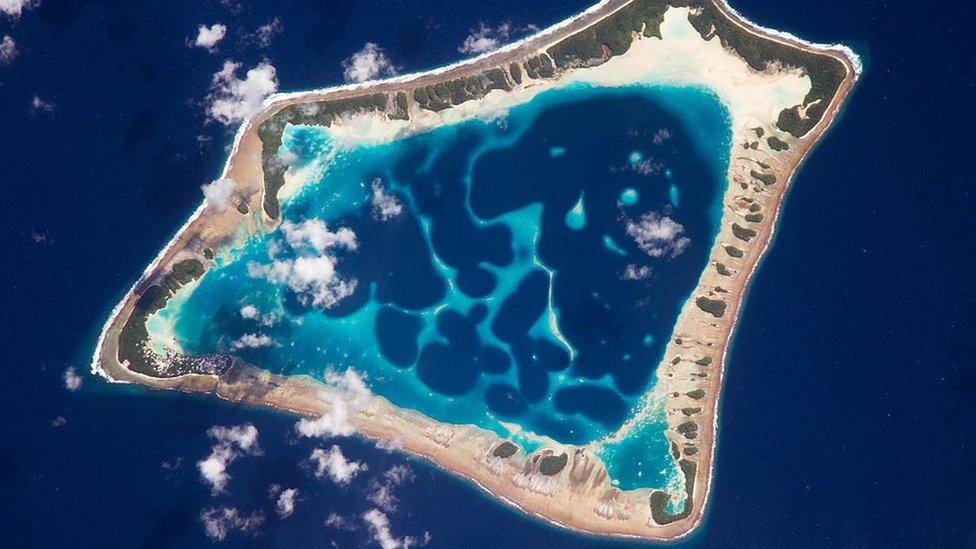
At roughly eight km wide, Atafu is the smallest of three atolls and one island that make up Tokelau
Key dates in the history of Tokelau:
c. 1000AD - Archaeological evidence indicates the atolls of Tokelau - Atafu, Nukunonu and Fakaofo - were settled from Samoa and may have been a key point in migration towards eastern Polynesia.
1765 - Royal Navy Commodore John Byron is the first European to sight Atafu, which he names "Duke of York's Island".
1791 - Royal Navy Captain Edward Edward visits Atafu in search of mutineers from HMS Bounty.
early-19th Century - Islands are periodically visited by European or US ships.
1845-1870s - Protestant and Catholic missionaries visit the islands.
1862-63 - Peruvian "blackbirder" slave traders kidnap many of the men on the islands to work as labourers. Most die of dysentery and smallpox, and few return.
1877 - Tokelau becomes a British protectorate in 1877, a status that is formalised in 1889.
1916 - Britain annexes the islands and includes them within the boundaries of the Gilbert and Ellice Islands, now Kiribati and Tuvalu.
1926 - Britain passes administration of Tokelau to New Zealand.
1948 - Formal sovereignty is transferred to New Zealand with the enactment of the Tokelau Act 1948. Tokelau becomes part of New Zealand on 1 January 1949.
1980 - Treaty of Tokehega between New Zealand and the US settles disputed claims and delineates the maritime boundary between Tokelau and American Samoa.
2006 and 2007 - Two referendums are held proposing turning Tokelau from a non-self-governing territory into a self-governing state in free association with New Zealand. Both fail to get the two-thirds majority required to pass.
2007 - The parliament of Tokelau proposes a flag containing four stars, roughly positioned according to the locations of the three atolls, but also including Olohega or Swains Island, recognised as part of American Samoa in the Treaty of Tokehega.
2008 - The proposed flag is modified, in a compromise still including four stars but arranged in the shape of the Southern Cross. This modified flag is officially adopted in 2009.
2011 - Tokelau declares its entire exclusive economic zone of 319,031 sq km a shark sanctuary.
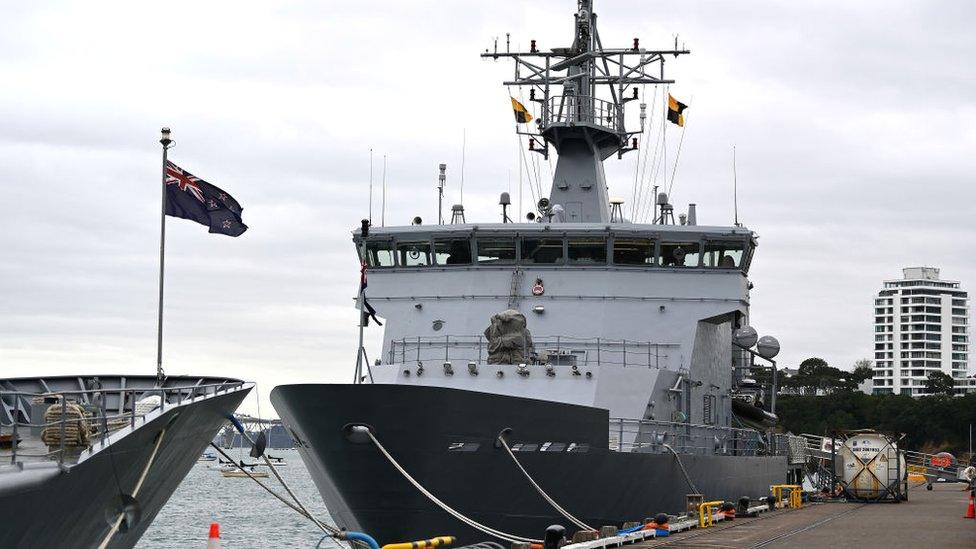
HMNZS Wellington delivers Covid vaccines to Tokelau and the northern Cook Islands in 2021
Related topics
- Published26 February 2024

- Published26 January 2024
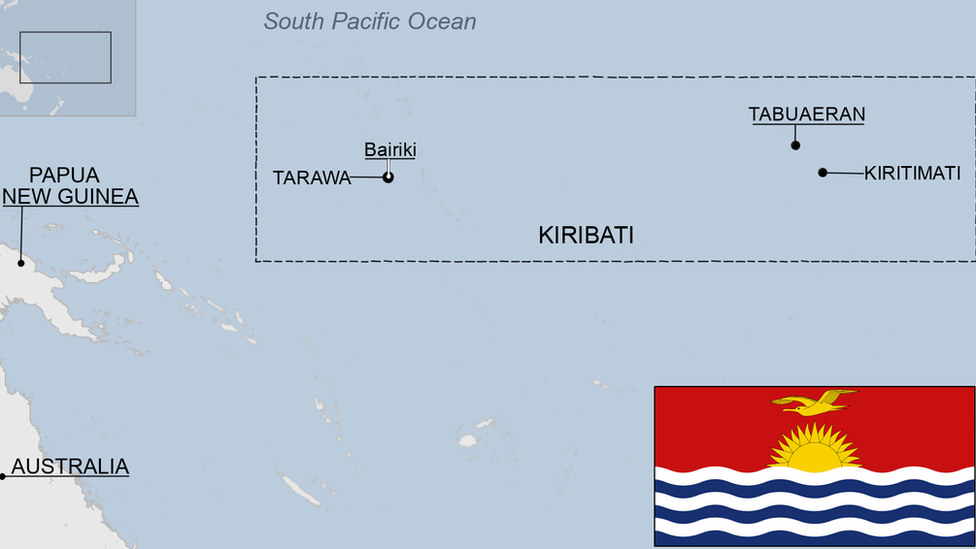
- Published27 October 2023

- Published23 August 2023
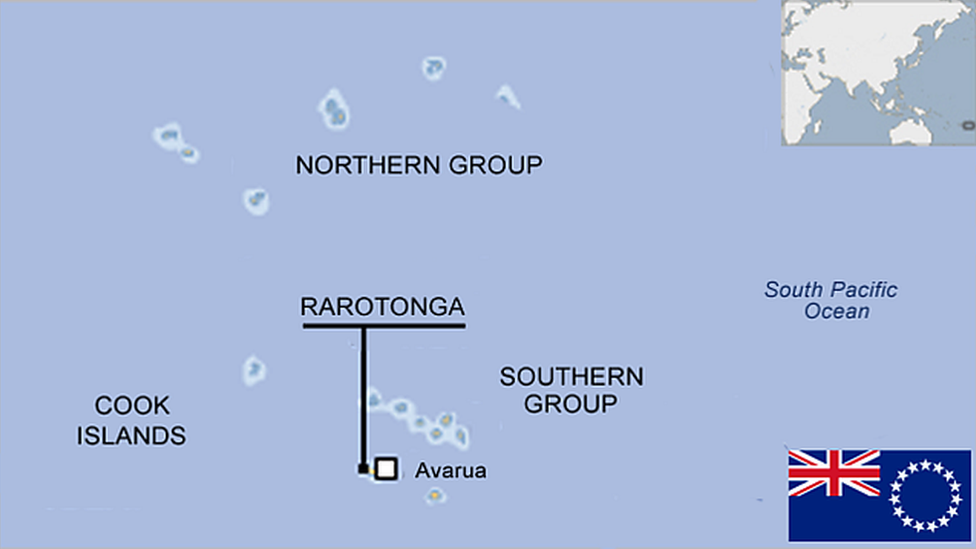
- Published23 August 2023
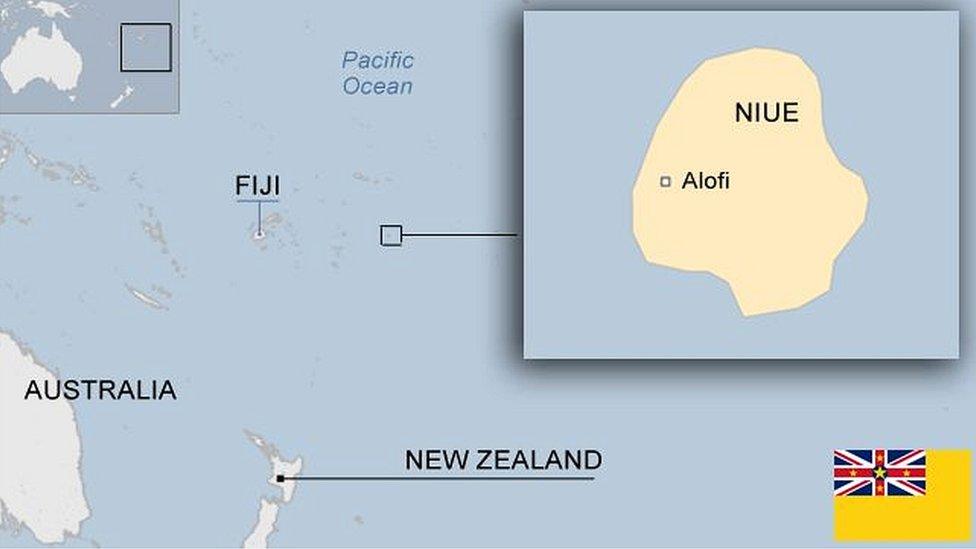
- Published23 August 2023

- Published22 August 2023
